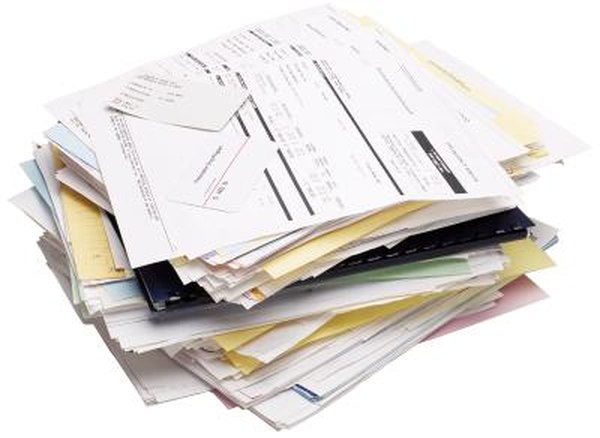How to Calculate the Best Expense Ratio for a Loan Modification
Lenders analyze total monthly expenses relative to income before approving a loan modification.
Stockbyte/Stockbyte/Getty Images
Homeowner hoping to keep a home out of foreclosure may ask the lender to restructure the mortgage payment through a loan modification. In preparation for the loan modification application, you might run the numbers on your own to determine whether you are a likely candidate for this foreclosure prevention measure. To calculate the best expense ratio for a loan modification, you must gather your total recurring monthly expenses, as lenders do.
Looking at the Total Package
Lenders determine whether you can afford a house by comparing the amount of the monthly payment -- which includes loan principal and interest, property taxes and homeowner insurance -- to your gross monthly income. Your housing expense may also include a homeowners association fee if you own a condominium or a house governed by an HOA. You are more likely to repay a loan, when your total recurring monthly expenses consume a minimal percentage of your income. Lenders cap debt-to-income ratios for housing and total monthly expenses -- front-end and back-end DTI ratios, respectively.
Playing the Percentages
A DTI ratio is expressed as a percentage. To obtain the ratio, divide the monthly payment by your gross monthly income. Multiply the answer by 100 to express the DTI ratio as a percentage. For example, a monthly housing payment of $1,500 with a $4,000 monthly salary results in a front-end DTI ratio of about 38 percent. To get the back-end ratio, add your housing expense to your recurring debt obligations, including loans and minimum credit card payments. Then divide the sum by your gross income and multiply the answer by 100. For example, if total monthly debts, including your housing payment, equal $2,000 per month, you have a back-end DTI ratio of 50 percent.
A Numbers Game
Lenders lower interest rates, extend the repayment term and otherwise restructure loan features to come up with the best modified payment that works for you and them. A Home Affordable Modification Program modification can result in a back-end DTI ratio as low as 25 percent and as high as 42 percent. Lenders use a "waterfall process," in which they take gradual steps to achieve the ideal modified payment. They may build upon each step to reach the best -- or a benchmark -- DTI ratio. Other than the ability to accept or reject a proposed modification, as the borrower you have limited say in how the lender restructures the loan.
Target Numbers, Not Magic Numbers
The HAMP has a target back-end DTI of 31 percent if your pre-modification back-end DTI ratio exceeds 31 percent. A HAMP modification can result in a back-end DTI as low as 25 percent, however, if you had a pre-modification back-end DTI ratio of 31 percent or less. Lenders set target DTI ratios rather than hard-and-fast ratios. If your lender doesn't participate in the HAMP or is unable to get the DTI ratio to an acceptable level through the HAMP, or if your loan type doesn't qualify for the HAMP, your lender may offer you an in-house loan modification -- its own version of a loan restructuring. Your lender may also allow a higher DTI ratio. For example, Freddie Mac standard loan modifications allow DTI ratios as high as 55 percent.
References
Resources
Writer Bio
K.C. Hernandez has covered real estate topics since 2009. She is a licensed real estate salesperson in San Diego since 2004. Her articles have appeared in community newspapers but her work is mostly online. Hernandez has a Bachelor of Arts in English from UCLA and works as the real estate expert for Demand Media Studios.

